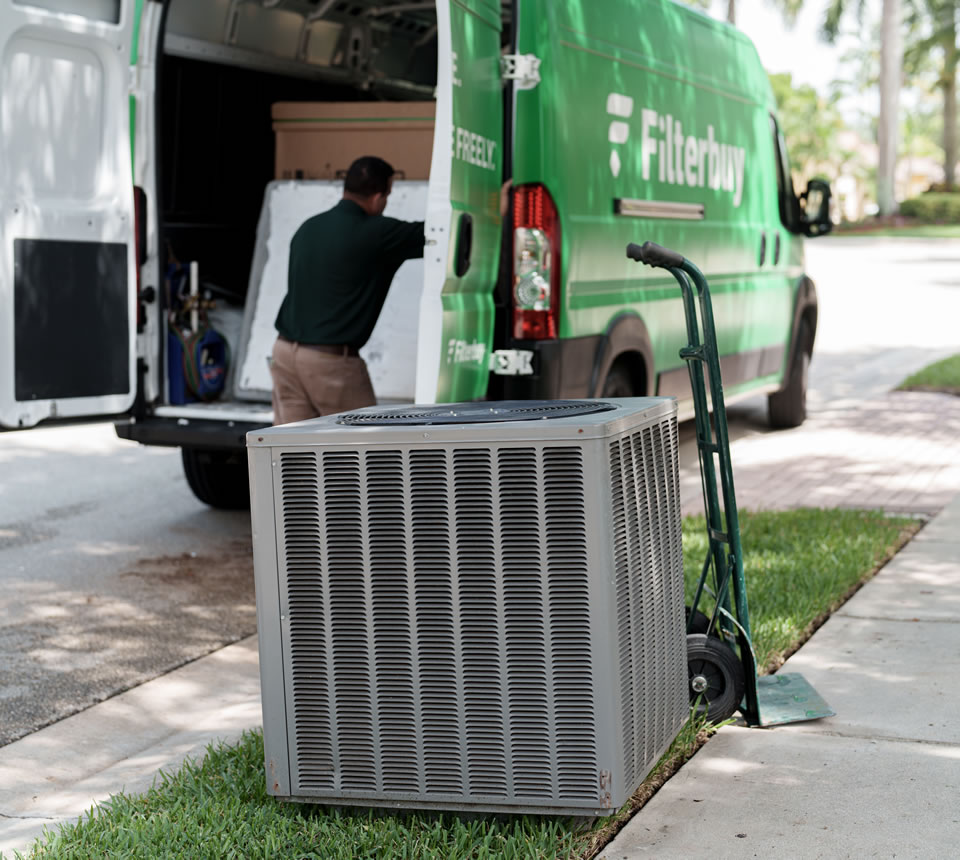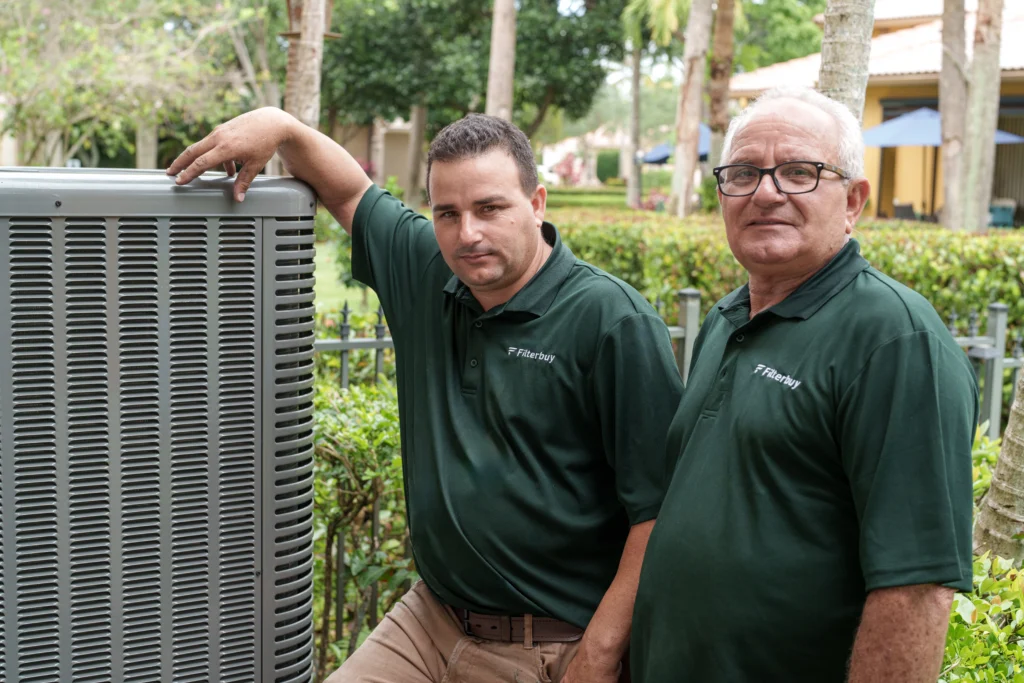Replacing or upgrading a furnace is one of the bigger investments most homeowners make, so choosing the right contractor matters as much as choosing the right equipment. A good installer will size the unit correctly, follow local codes, pull the proper permits, and stand behind the work for years. A poor installer can leave you with uneven heat, higher energy bills, or safety hazards. The five sections below walk you through everything you need to check—step by step—before you sign a contract.
Key Takeaways
- Check local options: Make sure each company offers the service you need, can start when you need it, and lists current industry certificates.
- Read several review sites: Consistent praise—or repeated complaints—gives the most accurate picture.
- Demand an itemized estimate: Labor, parts, permits, and extras should be listed separately so you know exactly what you’re paying for.
- Confirm license and insurance: Valid paperwork protects you if something goes wrong during the job.
- Watch for add‑on fees: Read the fine print and ask questions until every charge is clear.
1. Understand What Your House Really Needs
Before you call any company, take stock of your home. Confirm the fuel that already serves your appliances—natural gas, propane, heating oil, or straight electricity. If you plan to switch fuels, note whether a new gas line, oil tank, or electrical upgrade will be required, because that extra work can add thousands to the bill.
Next, consider efficiency. Modern gas furnaces range from about 80 percent Annual Fuel Utilization Efficiency (AFUE) up to 98 percent. Higher AFUE models cost more up front but use less fuel every winter. In colder climates or homes with high heating demand, the payback can show up in just a few seasons.
Finally, think about the rooms that feel coldest today. Are they far from the current air handler? Do you notice weak airflow through certain registers? Make notes. A qualified contractor will ask about these trouble spots, measure your duct pressure, and factor those findings into the load calculation. If a salesperson quotes a size without taking measurements or asking questions, that is a red flag.
2. Research Local Furnace Installers
A web search for “furnace installer near me” will turn up dozens of names. Start narrowing the field by visiting each company’s website and confirming the basics: do they install your chosen fuel type? Are they available in the next few weeks rather than months? Do they list a current state license and proof of insurance? Many reputable HVAC firms display badges such as NATE (North American Technician Excellence) certification or factory‑authorized dealer status for the brands they carry. Those credentials show the technicians have met third‑party training standards.
If the company operates in your town, check your city or county permit office for any unresolved code violations. A single citation may not be a deal breaker, but a pattern of failures shows a lack of quality control.
3. Read the Reviews Before You Sign
Online reviews are the quickest way to see how consistently a contractor performs. Look at Google, Yelp, the Better Business Bureau, and at least one trade‑specific site such as Angi or HomeAdvisor. Five‑star ratings are good, but the comments under those stars matter more. Detailed notes about punctual arrival, clean work areas, and clear communication are strong signals of reliability. Repeated complaints about missed appointments, surprise fees, or warranty run‑arounds should make you pause.
Remember that even the best contractors receive an occasional one‑star post. Focus on trends across dozens of reviews, and pay attention to how the company responds when problems do arise. A polite, solution‑oriented reply says a lot about how they’ll treat you if anything goes wrong on your job.
4. Compare Written Quotes
Invite at least two, and ideally three, companies to perform an on‑site assessment. After the walkthrough, each firm should provide a written estimate that includes:
- Exact equipment model numbers with AFUE or HSPF ratings
- Itemized labor charges for removal, installation, and start‑up testing
- Any material add‑ons such as duct repairs, gas piping, or electrical upgrades
- Permit fees and disposal costs for the old unit
- Project timeline with a start and completion date in writing
- Warranty terms for both parts and labor
When you compare these proposals side by side, consider total value rather than bottom‑line price alone. A bid that is a few hundred dollars higher may include a longer labor warranty, a first‑year service plan, or a higher‑efficiency unit that pays you back every month on the gas or electric bill.
If something on the estimate looks vague—say, “miscellaneous materials, $500”—ask for clarification. A professional will revise the document rather than rely on fuzzy numbers.
5. Verify Licensing, Insurance, and Permits Before Work Begins
Before you sign a contract, use your state contractor‑license board’s website to confirm that the license number on the quote is active and free of disciplinary actions. Next, request a copy of the installer’s liability and workers’ compensation insurance certificates. These documents protect you if a ladder slips or a technician is injured on the job.
Finally, ask who will pull the furnace‑replacement permit. In most jurisdictions, the contractor—not the homeowner—submits the application and schedules the final inspection. A company that hesitates may be inexperienced or trying to skip code compliance. Permit fees are small compared to the risk of an uninspected install voiding your manufacturer warranty.
A Note on Warranties and Maintenance
Factory parts warranties can stretch from five years on budget models to ten or even twelve years on premium lines—provided the unit is registered within 60 days of installation. Labor coverage varies by contractor; one year is standard, but many reputable firms offer five‑ or ten‑year plans for a modest fee. Ask whether annual maintenance is required to keep either warranty valid. Signing up for a service agreement usually covers that requirement and catches minor issues before they shut down your heat on the coldest night of the year.
Why Filterbuy HVAC Solutions
Homeowners who want a single, reliable source often finish their search with Filterbuy HVAC Solutions. Our licensed technicians perform a full calculation, provide clear written quotes, and carry insurance that meets or exceeds state requirements.
We pull permits, arrive on schedule, and back every install with a solid labor warranty—and 24/7 phone support if you have questions later.
When the job is done, free‑shipping Filterbuy replacement filters arrive at your door on any schedule you choose, keeping the new system clean and efficient.
Frequently Asked Questions
What is the labor cost to install a furnace?
Labor for furnace installation typically runs $500–$1,000, rising to $2,000+ for complex or custom setups.
How much should I budget for a new furnace?
Expect to pay $1,500–$5,000 for the furnace itself—depending on size, brand, and efficiency—and add $500–$2,000 for installation.
Why does it cost so much to install a furnace?
Installation costs reflect skilled HVAC labor, ductwork modifications, permits, and safety checks. Your home’s layout and the condition of existing ductwork also influence the total.
Is it worth replacing a 20-year-old furnace?
Yes. Furnaces older than 15 often fall below 80% efficiency, driving up energy bills. A modern high-efficiency model can cut utility costs and boost comfort.
Does home insurance cover furnaces?
Most homeowners insurance excludes mechanical breakdowns. Instead, protect your investment with manufacturer warranties or HVAC service plans that cover repairs for a set term.
Can a handyperson install a furnace?
Licensed HVAC contractors bring certifications, insurance, and code-compliance expertise. While handypersons may charge less, they often lack specialized HVAC training, increasing the risk of installation errors and safety issues.
How many hours does it take to install a furnace?
A standard furnace replacement usually takes 4–8 hours. New installations or jobs requiring ductwork updates can extend to a full day (8–10 hours).
How much is a furnace for a 2,000 sq ft house?
Unit costs run $2,000–$5,000; with installation, plan for $3,500–$7,500. Gas furnaces have higher upfront costs but lower operating expenses over time.
Can I install my furnace?
DIY furnace installation demands HVAC expertise, electrical and gas-line proficiency, and proper venting. Mistakes can void warranties or create safety hazards—professional installation is strongly recommended.
How much is a furnace for a 1,500 sq ft house?
Unit prices typically are gas $2,000–$5,000; oil $2,000–$8,000; electric $1,000–$2,500. Installation costs extra.
How long do furnaces usually last?
Gas furnaces last 15–20 years; oil furnaces 20–25 years; heat pumps (combined heating/cooling) 10–15 years. Lifespan depends on installation quality, maintenance, and local climate.
How much is a new furnace for a 3-bedroom house?
Installed furnace costs for a typical 3-bedroom home range from $2,000 to $5,000. High-efficiency or larger-capacity models can top $10,000.







